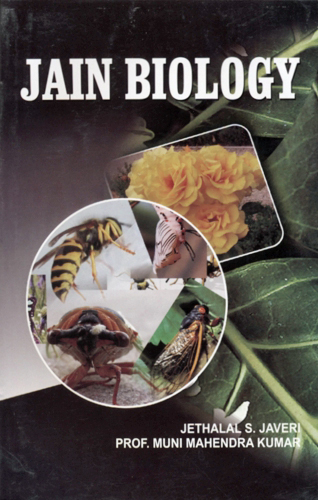Biologists believe that at some time in the course of evolution, the differentiation of living organisms into plants and animals occurred. They Cannot logically say that the animal kingdom originated from the plants OT vice versa, though it seems probable that earth's first organisms were capable of synthesizing complex organic compounds from the simple inorganic substances of air and soil, a process which is characteristic of plants rather than animals. What criteria, if any, may be used to separate plants from animals? Possibly there may be four criteria, all of which are rather unsatisfactory.
Firstly, animals are unable to manufacture their own food and are completely dependent upon plants, either directly (herbivorous animals) or indirectly (carnivorous animals) for their nutrition, In contrast, most plants are able to make their own food and arc more or less independent of external sources of food supply.
Secondly, animals possess a limited scheme of growth, in which the mature individual attains a certain maximum size and characteristic form, In plants, however, the maximum size attainable by members of a given species is exceedingly variable and depends in considerable degree upon conditions of the external environment.
Thirdly, most plants are equipped with a structural framework of cellulose. Animals lack cellulose.
Lastly, most animals possess the ability of moving from place to place. Plants are firmly anchored in the soil in which they grow.
We have seen that in Biology, the psychic order of existence on this Earth is first divided into two kingdoms—the animal kingdom and the plant kingdom. Thus, all animals are included in the former and all plants in the latter. In a descending sequence the classification consists of seven categories:
- kingdom
- phylum—for animals; division—for plants,
- class,
- order,
- family,
- genus, and
- species.
SPECIES: In the ascending sequence, species is the basic unit, defined as a group of individuals which are genetically distinct, reproductively isolated and similar in morphological characteristics. E.g. Panthera leo, the lion, and Panthera tigris, the tiger, are species of the genus panthera.
GENUS (pi. Genera): assemblage of related species evolved from a common ancestor. The genus panthera is differentiated from the related genus felis which includes other wild cats.
FAMILY: It includes related genera. All types of'cats' belonging to different genera are grouped under the family felidae.This family is distinguished from canidae which includes dogs and foxes.
ORDER: Assemblage of related families; both the above families are placed under the order carnivora.
CLASS: Assemblage of related orders; the order primates which includes man, monkey, ape, etc., and the above order carnivora are included in the class mammalia.
PHYLUM (pi. Phyla): Organisms of different classes having some features in common are included in a phylum. The phylum chordata includes a number of classes such as amphibia, reptilia, and mammalia.
In the case of plants, several classes constitute a DIVISION which is equivalent to the phylum of the animal kingdom.
Compared to the above, the Jain systems of classification are very much simpler. One of the ways is to classify according to the number of sense-organs possessed by the organisms. Thus the entire psychical order of existence is divided in just five classes only: one-sensed, two-sensed, three-sensed, four-sensed, and five-sensed.
The organisms with only one sense organ-sense of touch—are naturally the most primitive. They are called STHĀVARAS - immobile - as they are devoid of the ability of locomotion. They are further divided into five sub-classes according to the nature of their bodies. Thus we have earth-, water-, fire-, and air-bodied organisms and plants (with vegetable body).
Amongst the five sthāvaras, organisms possessing only one sense-organ, PLANTS are the most highly developed ones. This truth has been indicated by both commentators of Sūtrakṛtāṅga Sūtra—Curṇikāra and Vṛttikāra—
A question was raised—In Jain scriptures, traditionally, plants are put as number five in the list of sthāvaras; why then did the author deal with them first? They have replied thus: " Among the live sthāvaras, only the vegetables are far more advanced than the other four, i.e., the consciousness of the plants is very much more recognisable. Masses also accept them as living organisms and hence any dissertation in respect to them would be readily acceptable. To convince people about the psychical character of the other four sthāvaras is much more difficult; that is why they have been dealt with later.[1]
It is obvious from the development of the life-science, such as Biology coming much later than that of Physics etc. which deal with lifeless matter that Biology would have to make much advance to he able to investigate and corroborate or reject the infinitesimal consciousness of the four categories of living organisms with earth-bodies or water-bodies.
 Jethalal S. Zaveri
Jethalal S. Zaveri
 Prof. Muni Mahendra Kumar
Prof. Muni Mahendra Kumar

